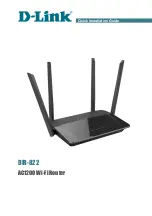
Transition Networks
S4224 Web User Guide
33558 Rev. C
Page 47 of 669
Additional Notes
1. The IP address in step B/C should not be the router unless you are in host mode" and the host you
are configuring is the router. In network mode, the IP address in B/C should not be an IP address but
a network address (192.168.99.0 in my example). The Default Router IP address should be the IP
address of the router on that network. This could be the VLAN interface on the DHCP server or an
actual router plugged into the DHCP server.
2. Re: Note 4 on page 1: If a packet DHCP packet has been relayed before it gets to our DHCP server,
our DHCP server will drop it. The workaround is to not use a relay and run a DHCP server on the
device you want to run a relay on.
3. Some Linux clients enable RFC 4361 (DUID) support by default. You may have to have these Linux
clients revert to RFC 2131/2132 (ClientID) in order to work. DUID (DHCP Unique Identifier) is a way
to send a unique ID for both IPv4 and IPv6 clients to a DHCP server. ClientID is a simpler unique ID
for IPv4 only.
4. Configuring DHCP Relay is not supported (Relay Mode and Server, Info Mode, and Info Policy).
5. The maximum number of Pools/addresses that can be served per Port depends on available memory
on the device, so simpler setups can handle more IP addresses; devices with more memory can
handle more IP addresses (the S3290 has 82MB; the S4224 has 73MB).
DHCP Options Used
See the IANA web site at
http://www.iana.org/assignments/bootp-dhcp-parameters/bootp-dhcp-
for more DHCP options information. See the IETF web site for RFC 2132 information
http://tools.ietf.org/html/rfc2132
and at
http://www.networksorcery.com/enp/rfc/rfc4361.txt
information.
Subnet Mask
: DHCP option 1. Specify subnet mask of the DHCP address pool.
Lease Time
: DHCP option
51
,
58
and
59
. Specify lease time that allows the client to request a lease time
for the IP address. If all are 0's, then it means the lease time is infinite.
Domain Name
: DHCP option
15
. Specify domain name that client should use when resolving hostname
via DNS.
Broadcast Address
: DHCP option
28
. Specify the broadcast address in use on the client's subnet.
Default Router
: DHCP option
3
. Specify a list of IP addresses for routers on the client's subnet.
DNS Server
: DHCP option
6
. Specify a list of Domain Name System name servers available to the client.
NTP Server
: DHCP option
42
. Specify a list of IP addresses indicating NTP servers available to the
client.
NetBIOS Node Type
: DHCP option
46
. Specify NetBIOS node type option to allow NetBIOS over TCP/IP
clients which are configurable to be configured as described in RFC 1001/1002.
NetBIOS Scope
: DHCP option
47
. Specify the NetBIOS over TCP/IP scope parameter for the client as
specified in RFC 1001/1002.
NetBIOS Name Server
: DHCP option
44
. Specify a list of NBNS name servers listed in order of
preference.
NIS Domain Name
: DHCP option
40
. Specify the name of the client's NIS domain.
NIS Server
: DHCP option
41
. Specify a list of IP addresses indicating NIS servers available to the client.
Client Identifier
: DHCP option
61
. Specify client's unique identifier to be used when the pool is the type
of host.
Client Name
: DHCP option
12
. Specify the name of client to be used when the pool is the type of host.
















































